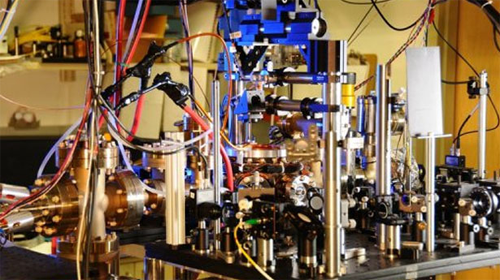The definition of a second could get even more precise thanks to a new model of atomic clock. The advance has been made by changing the element used for the timekeeping.
An atomic clock uses the same principle as a pendulum in a physical clock, just on a tiny scale. It measures the signal emitted by electrons as they change back and forth between two energy levels.
The current standard definition of a second is based on atomic clocks that use a cesium atom. The official definition is 9,192,631,770 fluctuations at absolute zero, though in reality clocks have to adjust for the fact that it’s impossible to reach this temperature and thus you have to take into account ambient radiation. (Puerile readers will also be pleased to know you have to adjust for interference from the laser used in the clock, a problem known as the Dick effect.)
The National Institute of Standards and Technology in Colorado has now produced a working clock using a different element, ytterbium, which changes energy levels at a quicker pace. (Cryptic crossword fans may like to note it’s an anagram of “I’m buttery.”)
Its benefits have caused confusion in some press reports. The ytterbium clock is more precise than cesium clocks: quoting the NIST’s Andrew Ludlow, CNN noted that “Whereas scientists talk about billions of oscillations per second in the cesium clock, oscillations per second in the ytterbium clock approach one quadrillion per second.” In other words, the ytterbium clock can break time up into even smaller intervals.
However, the ytterbium clock isn’t yet the world’s most accurate. Although its level of accuracy is the main achievement of its construction — its level of variation means you can rely on it being correct to the nearest 0.000000000000000001 seconds — it still falls short of the accuracy of cesium clocks. Rectifying that is the next goal and when that’s achieved, it could be possible to accurately measure time using a more precise definition of a second.
The ytterbium model has a couple of other notable characteristics. It’s considerably faster to calibrate: from scratch it can be running at best performance in around a second, compared with around five days set up for a cesmium model.
The various technologies needed to measure the faster energy level changes of ytterbium also mean the first clock needs a similar space to the top of a dining table. NIST researchers say shrinking the device is another goal, the aim being to make it viable for use on space craft. This could allow uses as diverse as correcting errors in GPS technology to exploring the way gravity works in the theory of general relativity.

